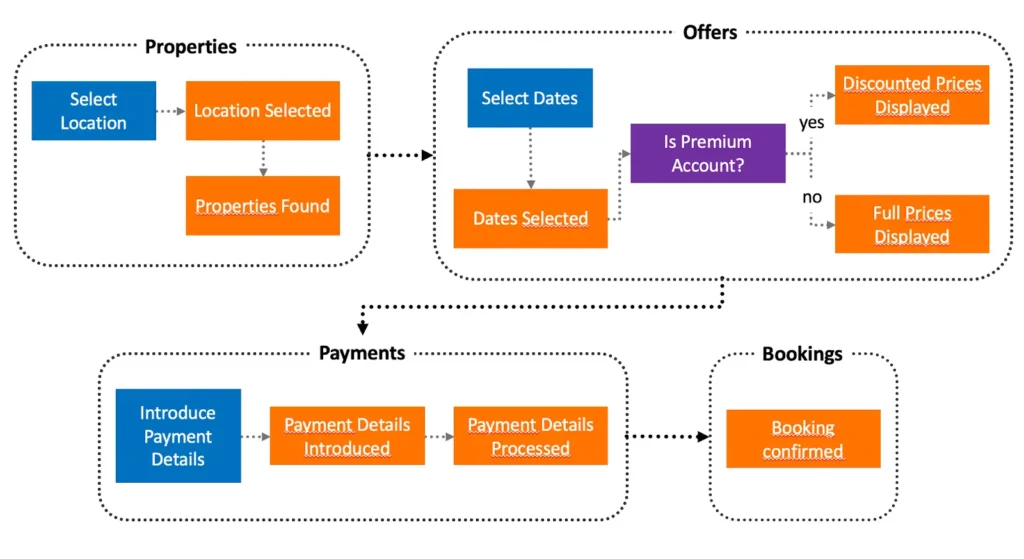Event-driven architecture (EDA) is a design pattern in software development that emphasizes the generation, detection, and response to events. Instead of relying on continuous polling or synchronous calls, EDA systems react to events—changes in the state of an application, system, or user actions—allowing for decoupled, highly scalable, and responsive systems.
In EDA, events are central components that trigger responses or actions in real time, making this architecture ideal for dynamic, scalable systems that require real-time data processing, such as IoT systems, financial services, and e-commerce platforms.
1. What is Event-Driven Architecture (EDA)?
Event-driven architecture is a paradigm where a system’s components communicate by producing and reacting to events. An event represents a significant change in state, such as:
- A user clicking a button on a website.
- A product being added to a shopping cart.
- A new file being uploaded to a server.
These events are processed asynchronously, which allows the system to be more responsive and scalable. EDA consists of three primary components:
- Event Producers: These generate events when specific actions or state changes occur.
- Event Consumers: These listen for events and react to them.
- Event Channels: These transport events from producers to consumers, often through message brokers or event buses.
2. Key Concepts of Event-Driven Architecture
2.1 Event Producers
Event producers are the components responsible for generating events. They don’t know who will handle these events or when they will be processed, which makes them decoupled from the consumers. Examples of event producers include user interfaces (UI), sensors in IoT devices, or even background processes that generate data at specific intervals.
Example:
A user submits an order on an e-commerce website, which generates an “Order Placed” event.
2.2 Event Consumers
Event consumers listen for events and react accordingly. For example, when an order is placed, an event consumer may initiate a workflow to process payment, send confirmation emails, or update inventory. Multiple consumers can respond to the same event independently.
Example:
When the “Order Placed” event is detected, a consumer may begin processing the payment and notifying the warehouse for shipping.
2.3 Event Brokers or Event Buses
Event brokers or buses are responsible for routing events from producers to consumers. They ensure that events are delivered reliably, even in large distributed systems. Popular event brokers include Apache Kafka, RabbitMQ, and AWS EventBridge. Event brokers handle scalability, fault tolerance, and performance in modern event-driven systems.
3. How Event-Driven Architecture Works
The flow of events in EDA can be described as follows:
- Event Generation: An event producer (such as an application or a system component) generates an event when a change in state occurs.
- Event Propagation: The event is sent to an event broker or an event bus, which routes the event to the appropriate consumers.
- Event Handling: Event consumers, which are listening for specific events, react by processing the event or triggering additional actions.
- Event Response: The system might generate a new event in response to handling the initial event, creating a chain of events that drive complex workflows.
4. Advantages of Event-Driven Architecture
4.1 Loose Coupling
In EDA, event producers and consumers are loosely coupled, meaning that they don’t need to know about each other’s implementation or state. This makes the architecture more flexible, as changes in one component (e.g., a new type of consumer) don’t require changes in others.
4.2 Scalability
EDA is inherently scalable. Since events are processed asynchronously, the system can handle a large number of events in parallel. Distributed event brokers like Kafka make it possible to scale event handling across multiple servers and regions, ensuring that even high-throughput systems remain performant.
4.3 Real-time Processing
Events are processed as they occur, making EDA suitable for applications that require real-time or near-real-time responses. Examples include financial trading platforms, e-commerce websites, and IoT ecosystems, where immediate actions are essential.
4.4 Flexibility
EDA allows systems to evolve more easily. New consumers can be added or removed without significantly impacting other components. This flexibility is particularly useful in microservices architectures, where different services must work together without tight coupling.
4.5 Fault Tolerance
Since event producers and consumers are decoupled, the system can handle failures more gracefully. If a consumer fails, the event broker can store the event and retry delivering it later. This helps maintain consistency and reliability in distributed systems.
5. Challenges of Event-Driven Architecture
5.1 Complexity in Management
While EDA offers flexibility, it also introduces complexity. Managing a large number of events, especially in a distributed system, can be challenging. Developers need to ensure that events are processed in the correct order and that systems recover gracefully from failures.
5.2 Eventual Consistency
EDA systems are often designed with eventual consistency, meaning that not all parts of the system may have the most up-to-date data at any given time. While this trade-off allows for better scalability and performance, it may complicate certain use cases where strong consistency is required.
5.3 Debugging and Monitoring
Since events are asynchronous, debugging and tracking the flow of events can be more difficult than in traditional synchronous architectures. Specialized tools are required to monitor and trace events across multiple systems.
5.4 Latency
Although EDA supports real-time processing, there may be slight delays due to the asynchronous nature of the architecture. In some high-performance use cases, even minimal latency might not be acceptable, requiring careful optimization.
6. Applications of Event-Driven Architecture
EDA is widely used across various industries and applications, including:
6.1 Internet of Things (IoT)
IoT devices rely heavily on event-driven systems to handle data from sensors and actuators. For instance, smart home systems use events to turn on lights when motion is detected or adjust the thermostat based on occupancy.
6.2 E-Commerce
In e-commerce platforms, events such as “Order Placed” or “Payment Processed” trigger various workflows like inventory updates, shipping notifications, and payment confirmation emails.
6.3 Financial Services
Stock trading platforms and payment processing systems rely on real-time event processing to execute trades and handle transactions. Events like “Trade Executed” or “Payment Failed” must be handled immediately.
6.4 Microservices Architectures
In microservices architectures, EDA enables communication between loosely coupled services. Microservices can emit and respond to events, allowing for more responsive and scalable systems.
7. Conclusion
Event-driven architecture is a powerful design pattern for building scalable, decoupled, and responsive systems. By reacting to events in real time, EDA enables flexible and efficient application architectures, especially in complex, distributed environments like IoT, microservices, and e-commerce.
At TechsterTech.com, we specialize in building event-driven architectures for modern applications. Our expertise helps businesses create responsive and scalable systems that can handle large volumes of data and deliver real-time experiences to users.



